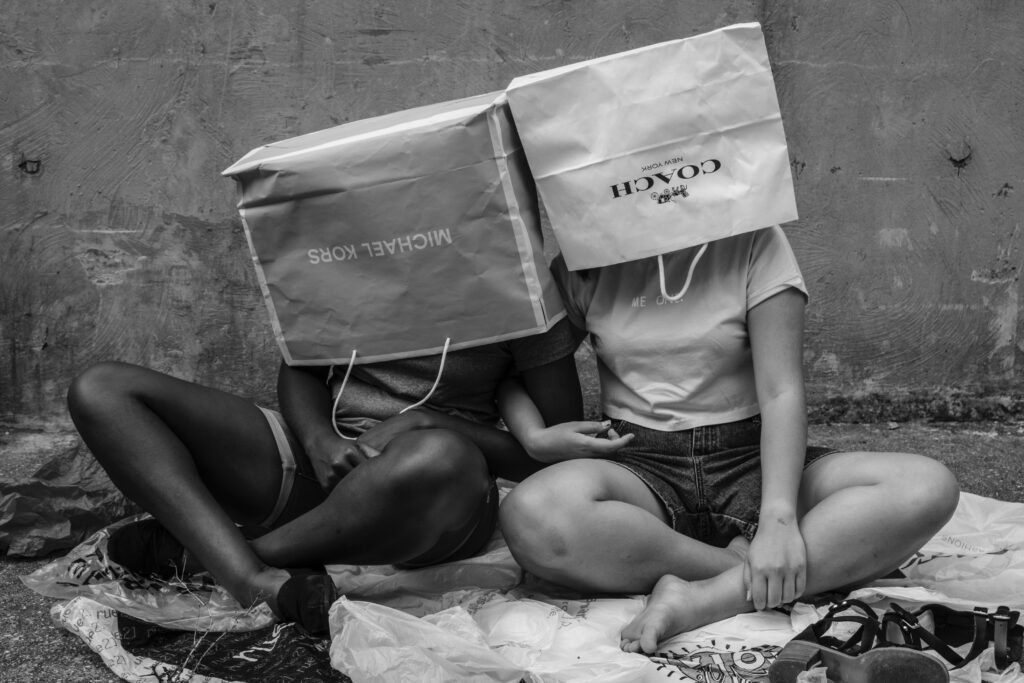
The Lure of and Obsession with Things External to Ourself for Happiness

“The immature fruit clings tightly to the branch
Rumi
because, not yet ripe, it’s unfit for the palace.
When fruits become ripe, sweet, and juicy,
then, biting their lips,
they loosen their hold.”
Psychological Wounds
When we have suffered trauma, in the form of either chronic wounding acts over time (such as chronic disconnection, humiliation, betrayal, abandonment, rejection, neglect, denial, abuse, verbal or physical) or one major traumatic event, or a combination of both, inner parts of us go into hiding. Wounded ego parts take charge as a result of these narcissistic injuries.
When we experience this our organism ‘stores the memory’ of the event(s), which were too much for us to process but the emotional charge associated with the hurt remains. When we experience this in childhood, the real damage is that we get conditioned to disconnect from our true self, others and our natural connection to the mystery of life ( the different forms of spirituality we believe in). Being conditioned in this way to ignore our true nature, including our emotional and spiritual dimensions of being, is also a form of abuse.
Toxic Wounds

Early lack of emotional bonding and rejection can be viewed as trauma and narcissistic injuries. Freud originated the concept of narcissism distinguishing healthy narcissism he viewed as a double investment in self and in others as opposed to ‘unhealthy’ manifestations as excessive investment into the self. Otto Kernberg further termed ‘pathological narcissism’ a poorly integrated sense of self deriving from unconscious conflicts fixated at various childhood phases of development.
“Until you make the unconscious conscious it will direct your life and you will call it fate.”
Carl Jung
Psychological wounds which have not been addressed over time grow a little like an abscess. The toxicity forms like pus, which at the slightest ‘trigger’ will burst out, via projections, onto others. We will unwittingly push away that which we deeply desire (because we are inauthentic, we have buried our true wishes deep inside) and will instead attract what is not good for us. This is because our wounded ego is in charge. We remain unaware and unconscious acting very much like overgrown infants in an adult body always wanting more until something/someone or an event forces us to address this. Often this comes in the form of a relationship breakdown, a traumatic event, illness, redundancy etc. to our amazement often stating things like ‘this came out of the blue’. Sometimes it happens simply because we suffer too much, as was the case of spiritual teachers like Eckart Tolle or Sadghuru.
As Rumi shared this might be at the root of our emotional immaturity. We become children in an adult body desperately clinging onto others, to things, to toxic ties…to anything which bring us some joy because the alternative, connecting to ourselves does not exist. We have either not learnt how to do it as we were discouraged, or we simply identify with our various wounded ego selves. Our body lives today but our ‘inner software’ is from a different timeline, the wounded inner child timeline.
The Lure of Things External to Ourselves for Happiness

One of the consequence of humans living with unhealed narcissistic wounds is a relentless over-focus on external things and events to bring happiness and fill an inner emptiness. Most of our life experience becomes limited by our sense perceptions. Freud hypothesised that many adults suffering from narcissistic injuries are left at either the ‘oral’ or the ‘anal’ stage of development, acting like ‘overgrown babies’ entrapped emotionally and needing to fill themselves with things. In this unconscious state we will always want more and more : things and people, as has been shown by the proliferation of multiple dating apps and ever new shiny things for our consumption.
In this state, interactions with others tend to be transactional with a focus not from a place of sharing taking into account others as whole persons but to fulfil selfish needs – physical, financial, emotional and mental – with certain conditions attached. Lusting over physical & material things, including bodies and body-parts, is confused with love and connection. A profound lack of self-love, ignorance of our fundamental essence and dependencies are at the root of this over-reliance and lusting after the false promises of happiness. The antidote is to learn to connect with ourselves and others not transactionally from a place of wanting but with a deep desire to learn to love ourselves and others and to connect authentically and without conditions attached.
Those creating and selling false ‘Eldorados’ in the forms of shiny material things or promises, understand that once humans are attached emotionally, they operate from a place of weakness, which they can exploit for their own benefit (and profits). They operate from a narcissistic wound themselves since they are prepared to exploit others. They know that those who lack understanding, awareness and mastery of their own apparatus ( physical, mental, emotional, spiritual) might be bereft inside and are easily controlled. This is how addictions are created at societal and systemic level. Once a person is addicted it is very difficult for them to wean themselves off the thing, entity or person, they think is the cause of their happiness.
The good news is that with the right focus, information, knowledge and support most of us can heal. Below in the next section are some ideas to start this process.
5 Steps to Start Exploring and Healing Our Wounds

Step 1 – Take Responsibility
The first step is to know that we all have a choice and that we need to take responsibility. The energy or inner intelligence that pulsates in our cells which keeps us alive, is always available to us. We can learn to harness it by re-focusing inwardly rather than externally. This energy however can work against us when it has rigidified our defences over time. Patience is key.
Step 2 – Readiness and the right attitude
The right attitude which includes an openness to learning, a humility which shows that you do not know everything and that you are teachable are key ingredients on your journey. As most human beings will have experienced some forms of wounds, even those you might regard as experts, do your due diligence and trust your instinct. Those helping you should treat you with respect, empathy, and help you gain autonomy. The right credentials are a start but often not enough. The right guide will have humility and be able to demonstrate to you upon request that they have done and continue to do their own inner work.
Step 3 – Befriending Wounded Parts/Defences
The third step is to know that you might not realise that these hurt parts of you ( our wounded ego) might been in charge of most of your life choices and that there are good reasons for this. These parts will not like you wanting to address your wounds and will step in defensively, even in therapy. You will need expert and compassionate professional support to help you identify these inner blockages to see which parts of you are at the wheel of your car so to speak. The person you chose as your guide and the relationship you will build or co-create together is key. This guide/therapist will ideally explain to you that you do need a minimum commitment in terms of sessions over time to start a healing journey of deep inner work. It is irresponsible to ‘open something’ and to temporarily lower your defences in therapy without the right structure to support you over time. Beware of short-term promises.
Step 4 – Right Knowledge is Key
The development of knowledge of self in the form of self-awareness, introspection and reflection are also key on your journey to healing your wounds. Taking responsibility also means setting aside self-study or research time to educate yourself. You might also benefit from external transmission of knowledge in the form of psychoeducation. Whether you yourself research and educate yourself, take short courses or attend support groups. It’s up to you.
Step 5 – Relational Practice & Experimentation
The fifth step is practice or experimentation. Life will provide the actors and ingredients. However, it is essential to learn relationally with others and bring back in therapy anything you might need to shed light on and explore in a safe environment with the right guide.
In sum, we are developmentally ‘arrested’, stuck in the past where any trauma wound was originally created. The memory of the event is not available to conscious awareness and becomes like an abscess or knot, but the emotional charge remains accumulating like puss. The key to determining if we might be stuck in a toxic wound or toxic behavioural template is by reflecting on patterns in our life in relationships – in the personal and professional spheres – because others are our mirrors. When we know and feel we have toxicity, but we refuse to address it, we operate from our narcissistic injuries. We then project onto others because our multiple abscesses hurt and spill out, pushing what we deeply want away and attracting what is not good for us in.
When we refuse to feel the temporary pain of removing the toxicity of wounds we will continue to suffer and repeat toxic patterns because that is all we want to see and know. We will use ‘plasters’ and ‘crutches’, in the form of multiple addictions, including false illusions of happiness in the form of objectifying and using others and things to be happy, which we will then blame as the source of our unhappiness when they turn sour. It is in our power to change things. The tools and knowledge are widely available. When we can humbly receive feedback, start to express ourselves authentically and take loving action, we can start addressing our wounds.
If you are interested in learning more about the possible types of “narcissistic wounds” I offer introductory online courses of various lengths, depending on past modules participants might have taken with me. Feel free to connect with me.
